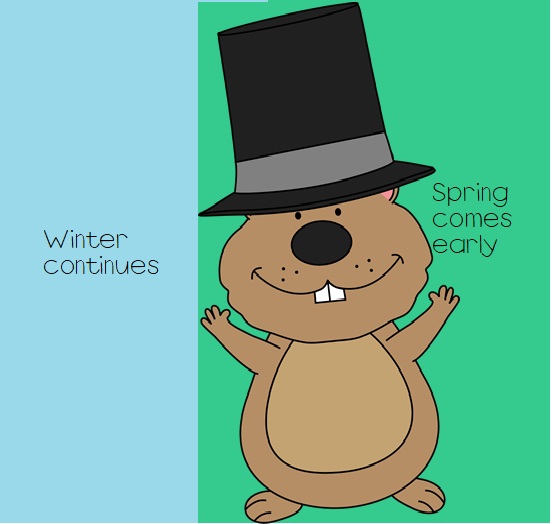This “Nothing Like A Good Book” (NLAGB) post is for Abby Levine’s Gretchen Groundhog, It’s Your Day!. Nancy Cote is the illustrator. There is “Nothing-L-A-G-B” read aloud and how it makes you feel.
Penguin Teacher
Personal Background with the Book
I was drawn to the book because the main character is a girl. Simple as that. 🙂 I love Punxsutawney Phil, but let’s see what Gretchen is all about. The great illustrations from Nancy Cote are lovely. The struggle of responsibility and fear of disappointment is huge, even as an adult, let alone little Gretchen Groundhog. Wow, if you could really understand how to face your fears as a child, the rest of your life wouldn’t seem half as scary. In addition, you would probably have many more exciting adventures.
The Book

Gretchen’s sad face on the cover really draws you into the story. You want to ask, “What’s wrong?” The kiddos immediately wonder what the problem could be for this little girl. Gretchen must come to terms with her fears about the responsibility that awaits her. Gretchen’s turning point is learning about previous family members and their reactions to the family duty.
“The first time is always the hardest!”
Great-Uncle Gus
The Product

All activities offer a choice of color or gray scale clip art!
24 Vocabulary Cards
Use the vocabulary cards to introduce the book. Place cards in a pocket chart or in view of the students, read through, and discuss what the story could be about. Vocabulary cards can be glued onto sentence strips with colored pictures.

A, B, C Order
There are four options with 6 words and one with an illustration box. There is one option with 12 words with two writing line choices. You can put the vocabulary cards at the station for the kiddos to organize and then record, if alphabetizing is a new or unmastered skill. “Self-Check” cards are provided to put at a station or for you, when you just can’t think another thought to grade.

Word Searches
There are four options with 6 words. There is one option with 12 words. The words do not share letters. The words can be backwards, horizontal, vertical or diagonal. “Self-Check” cards are provided to put at a station.

Writing Prompts for Story Connection
Prewriting Activity: As you read the story aloud highlight her fears and worries and how she overcomes them. After reading, compose an anchor chart with the heading: Have you ever worried about something you were asked to try or to do? Categorizing their responses of things they were once worried about doing, but with practice it became easier, more enjoyable.

6 Paper Options with the following attributes:
- Tracing- one sentence or two sentences
- Font Sizes- either 28 pt or 40 pt
- Writing Lines: “Headline/mid-line/baseline” writing lines or Single writing lines
Writing Prompt on a Strip

Rainbow Words and Rainbow Words with Sentence Composing
There are two versions with 6 words. Choose 4-5 colors (crayons or colored pencils) and trace each word with each color, one at a time. There is one version with 6 words. Choose 4-5 colored pencils and trace each word with each color, one at a time. Then use each word to compose sentences discussing the story. There are two writing line options.
Just in case you live in Texas, here are the TEKS that apply 🙂
Kindergarten:
ELAR.K.2B. (iv) identifying and reading at least 25 high-frequency words from a research-based list;
ELAR K.2B (i) identifying and matching the common sounds that letters represent;
ELAR K.2(E) develop handwriting by accurately forming all uppercase and lowercase letters using appropriate directionality
ELAR K.6(B) provide an oral, pictorial, or written response to a text;
First Grade:
ELAR 1.2B (i) decoding words in isolation and in context by applying common letter sound correspondences
ELAR 1.2B (vi) identifying and reading at least 100 high-frequency words from a research-based list;
ELAR 1.2(E) alphabetize a series of words to the first or second letter and use a dictionary to find words.
ELAR 1.2(F) develop handwriting by printing words, sentences, and answers legibly leaving appropriate spaces between words.
ELAR 1.7(A) describe personal connections to a variety of sources;
ELAR 1.7(B) write brief comments on literary or informational texts.
Second Grade:
ELAR 2.2B (i) decoding words with short, long, or variant vowels, trigraphs, and blends;
ELAR 2.2B (vii) identifying and reading high-frequency words from a research-based list;
ELAR 2.2(D) alphabetize a series of words and use a dictionary or glossary to find words;
ELAR 2.2(E) develop handwriting by accurately forming all cursive letters using appropriate strokes when connecting letters.
ELAR 2.7(A) describe personal connections to a variety of sources;
ELAR 2.7(B) write brief comments on literary or informational texts that demonstrate an understanding of the text;
Third Grade:
ELAR 3.2A (vii) identifying and reading high-frequency words from a research-based list;
ELAR 3.2(C) alphabetize a series of words to the third letter; and
ELAR 3.2(D) write complete words, thoughts, and answers legibly in cursive leaving appropriate spaces between words.
ELAR 3.7(A) describe personal connections to a variety of sources, including self-selected texts;
ELAR 3.7(B) write a response to a literary or informational text that demonstrates an understanding of a text;
thank you 🙂
If you’ve read or scrolled through this entire post, bless your heart or as Dr. Jean would say, “Kiss your brain!” In creating a post, it is such a struggle of not adding enough detail or adding way to much, that I leave you in an overload state. So, like I said, “Thanks for reading/scrolling!” Please drop a line if you have any questions concerning the product or how any of the items were used with my kiddos.
Until next time,





